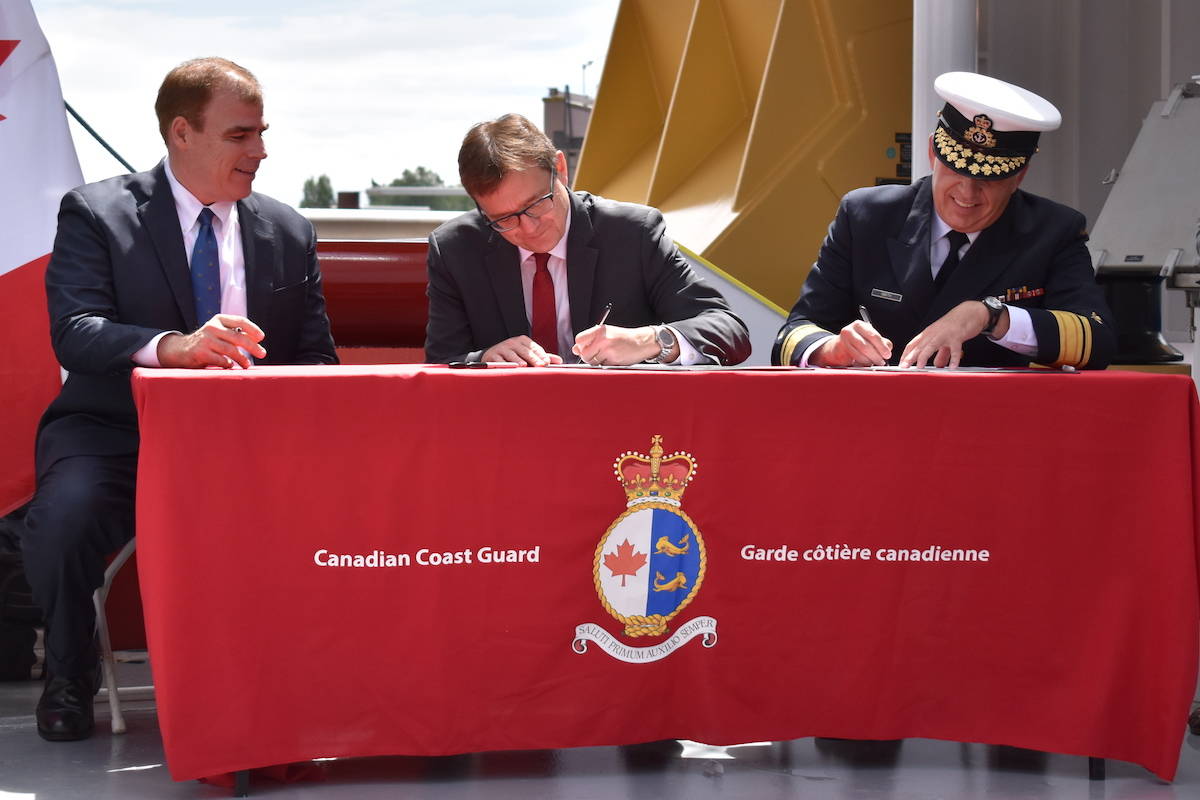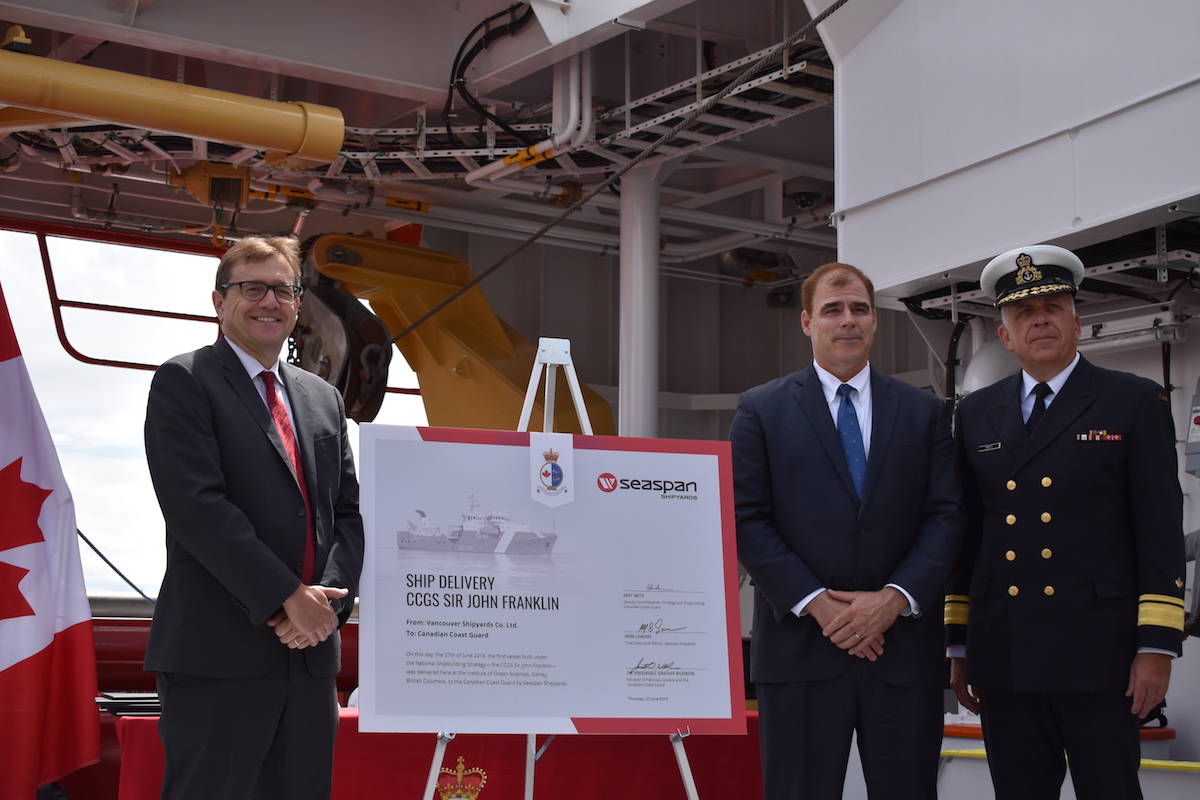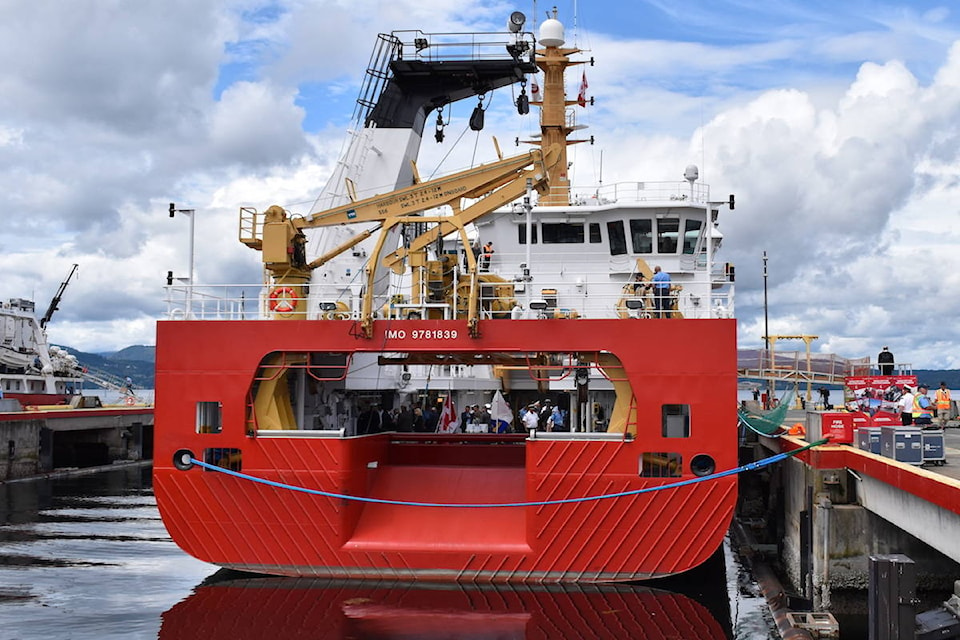Fisheries Minister Jonathan Wilkinson, who is the minister responsible for the Canadian Coast Guard, was in North Saanich Thursday to unveil the Sir John Franklin, built in B.C. shipyards.
The new 63.4-metre ship was being celebrated as part of the federal government’s National Shipbuilding Strategy (NSS), which it says will help to revitalize Canadian shipyards, and build up the coast guard and Canadian Navy. It hopes the strategy will add jobs and new business opportunities across the country.
ALSO READ: Scientists warn warmer and more acidic oceans threaten marine life
“The Sir John Franklin, built right here in B.C., is leading the way for many more Canadian-built ships to join our coast guard fleet, and help keep our oceans safer, cleaner and healthier,” says Wilkinson.
Seaspan’s Vancouver Shipyards won the government contract to build the Sir John Franklin and shortly after noon Thursday, the company’s CEO, Mark Lamarre, conducted a signing ceremony with Wilkinson and Andy Smith, deputy commissioner of strategy and shipbuilding for the Canadian Coast Guard.
The craft is one of three new offshore fisheries science vessels built by Seaspan, and is part of the non-combat package under the NSS. These will form the primary platform for Fisheries and Oceans Canada (DFO) scientists conducting research, such as performing acoustic surveys, monitoring fish stocks and collecting climate change data.
ALSO READ: Necropsy of grey whale rules out plastic poisoning
The Sir John Franklin includes four science labs: a wet lab, dry lab, ocean lab and control lab. It displaces approximately 3,212 tonnes of water and has a top speed of 13 knots. It contains more than 10 kilometres of piping supporting over 20 systems and is composed of over 13,000 individual parts.
To avoid a Boaty McBoatface incident, Canadian Coast Guard vessels are named after significant scientists and explorers. Franklin was a British naval officer who led many high-profile expeditions to Canada’s arctic, which ultimately led to the detailed mapping of previously uncharted northern coastlines.
ALSO READ: Woman flees North Saanich RCMP in dinghy
The other two offshore fisheries science vessels are the CCGS Captain Jacques Cartier and CCGS John Cabot. Cartier was the first man to map the Gulf of St Lawrence and Cabot was the first European to land on Newfoundland since the Viking bands centuries earlier.
The signing ceremony followed an Indigenous prayer and speeches. Deputy commissioner Smith was especially proud of the growing capability the ship represented, saying in his speech, “It’s built by Canadians, for Canadians and it’s painted red and white. Folks, it doesn’t get much more Canadian than that.”
nick.murray@peninsulanewsreview.com
Like us on Facebook and follow us on Twitter


